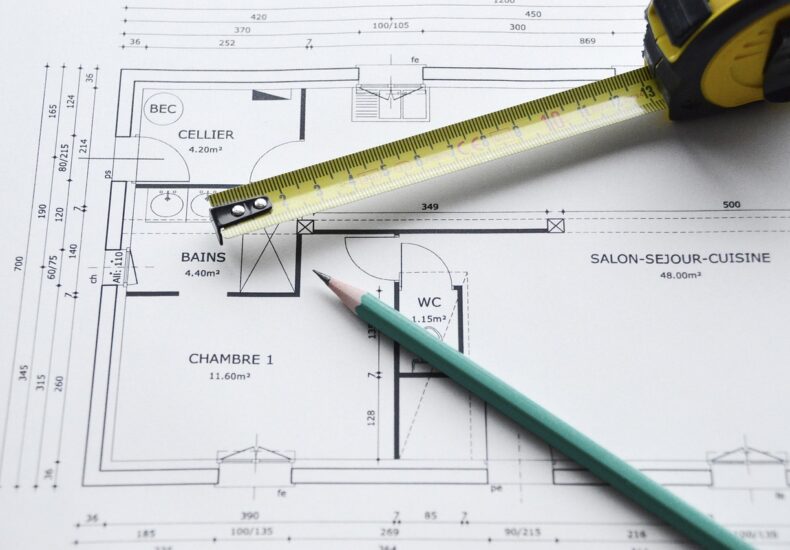
Innovative Architect
-
Table of Contents
- Innovative Architectures: Crafting the Future of Design
- Technological Integration in Modern Architecture
- Smart Buildings
- 3D Printing in Construction
- Sustainable Design Practices
- Green Buildings
- Biophilic Design
- Adaptive Reuse and Urban Regeneration
- Case Study: The High Line, New York City
- Case Study: Tate Modern, London
- Parametric Design and Digital Fabrication
- Parametric Design
- Digital Fabrication
- Conclusion
Innovative Architect: Crafting the Future of Design
Architecture has always been a reflection of human ingenuity and creativity. As we move further into the 21st century, the field is undergoing a transformation driven by technological advancements, environmental considerations, and evolving societal needs. This article explores the innovative architectures shaping the future of design, highlighting key trends, examples, and case studies.
Technological Integration in Modern Architecture
Technology is revolutionizing architecture in unprecedented ways. From smart buildings to 3D printing, the integration of technology is creating structures that are more efficient, sustainable, and responsive to human needs.
Smart Buildings
Smart buildings utilize advanced systems to optimize energy use, enhance security, and improve occupant comfort. These buildings are equipped with sensors and automation systems that monitor and control various aspects such as lighting, heating, and ventilation.
- Energy efficiency: Smart buildings can reduce energy consumption by up to 30% through automated systems.
- Enhanced security: Integrated security systems provide real-time monitoring and alerts.
- Occupant comfort: Automated climate control and lighting systems create a more comfortable environment.
3D Printing in Construction
3D printing is another technological innovation making waves in architecture. This technology allows for the creation of complex structures with precision and speed, reducing waste and labor costs.
- Cost reduction: 3D printing can lower construction costs by up to 50%.
- Speed: Structures can be printed in a fraction of the time compared to traditional methods.
- Customization: Architects can design intricate and unique structures that were previously impossible.
Sustainable Design Practices
Sustainability is a driving force in modern architecture. Architects are increasingly focusing on creating buildings that minimize environmental impact and promote a healthier living environment.
Green Buildings
Green buildings are designed to be environmentally friendly and resource-efficient. They incorporate sustainable materials, energy-efficient systems, and innovative design techniques to reduce their carbon footprint.
- Energy efficiency: Green buildings use renewable energy sources and energy-saving technologies.
- Water conservation: These buildings often include systems for rainwater harvesting and greywater recycling.
- Indoor air quality: Use of non-toxic materials and proper ventilation improves air quality.
Biophilic Design
Biophilic design aims to connect occupants with nature, enhancing their well-being and productivity. This approach incorporates natural elements such as plants, natural light, and organic materials into the built environment.
- Natural light: Maximizing natural light reduces the need for artificial lighting and improves mood.
- Indoor plants: Incorporating greenery improves air quality and creates a calming atmosphere.
- Natural materials: Using wood, stone, and other natural materials creates a more inviting space.
Adaptive Reuse and Urban Regeneration
Adaptive reuse and urban regeneration are strategies that breathe new life into old structures and neglected urban areas. These approaches not only preserve historical and cultural heritage but also promote sustainable development.
Case Study: The High Line, New York City
The High Line is a prime example of urban regeneration. This elevated park was created from a disused railway line, transforming it into a vibrant public space that attracts millions of visitors annually.
- Community engagement: The project involved extensive community input and collaboration.
- Economic impact: The High Line has spurred economic development in the surrounding area.
- Environmental benefits: The park provides green space and promotes biodiversity in an urban setting.
Case Study: Tate Modern, London
The Tate Modern is an example of adaptive reuse. This former power station was converted into a world-renowned art museum, preserving its industrial heritage while creating a modern cultural landmark.
- Historical preservation: The project retained the building’s original structure and character.
- Cultural significance: The museum has become a major cultural destination, attracting millions of visitors.
- Sustainable design: The renovation incorporated energy-efficient systems and sustainable materials.
Parametric Design and Digital Fabrication
Parametric design and digital fabrication are pushing the boundaries of what is possible in architecture. These approaches use algorithms and digital tools to create complex, highly customized structures.
Parametric Design
Parametric design involves using algorithms to generate architectural forms based on specific parameters. This allows architects to explore a wide range of design possibilities and create highly optimized structures.
- Customization: Parametric design enables the creation of unique, site-specific solutions.
- Optimization: Algorithms can optimize designs for structural performance, energy efficiency, and other factors.
- Innovation: This approach encourages experimentation and innovation in architectural design.
Digital Fabrication
Digital fabrication involves using digital tools and machinery to create building components. This includes techniques such as CNC milling, laser cutting, and robotic assembly.
- Precision: Digital fabrication ensures high precision and accuracy in construction.
- Efficiency: Automated processes reduce labor costs and construction time.
- Complexity: This technology allows for the creation of intricate and complex designs.
Conclusion
The future of architecture is being shaped by technological advancements, sustainable practices, and innovative design approaches. From smart buildings and 3D printing to green design and adaptive reuse, architects are pushing the boundaries of what is possible. As these trends continue to evolve, they will undoubtedly lead to more efficient, sustainable, and inspiring built environments.
Recent Posts
- A Natural Solution: How CBD Oil Can Assist Minimize Joint Inflammation in Dogs
- From Discomfort Alleviation to Anxiousness Decrease: The Versatile Perks of CBD Oil for Dogs
- Transform Your Retirement Savings: A Step-by-Step Guide to 401(ok) to Gold IRA Rollovers
- Unlocking Wealth: The Benefits of a 401(okay) to Gold IRA Rollover for Your Retirement Strategy
- Why Currently Is the Perfect Time for a 401( k) to Gold Individual Retirement Account Rollover